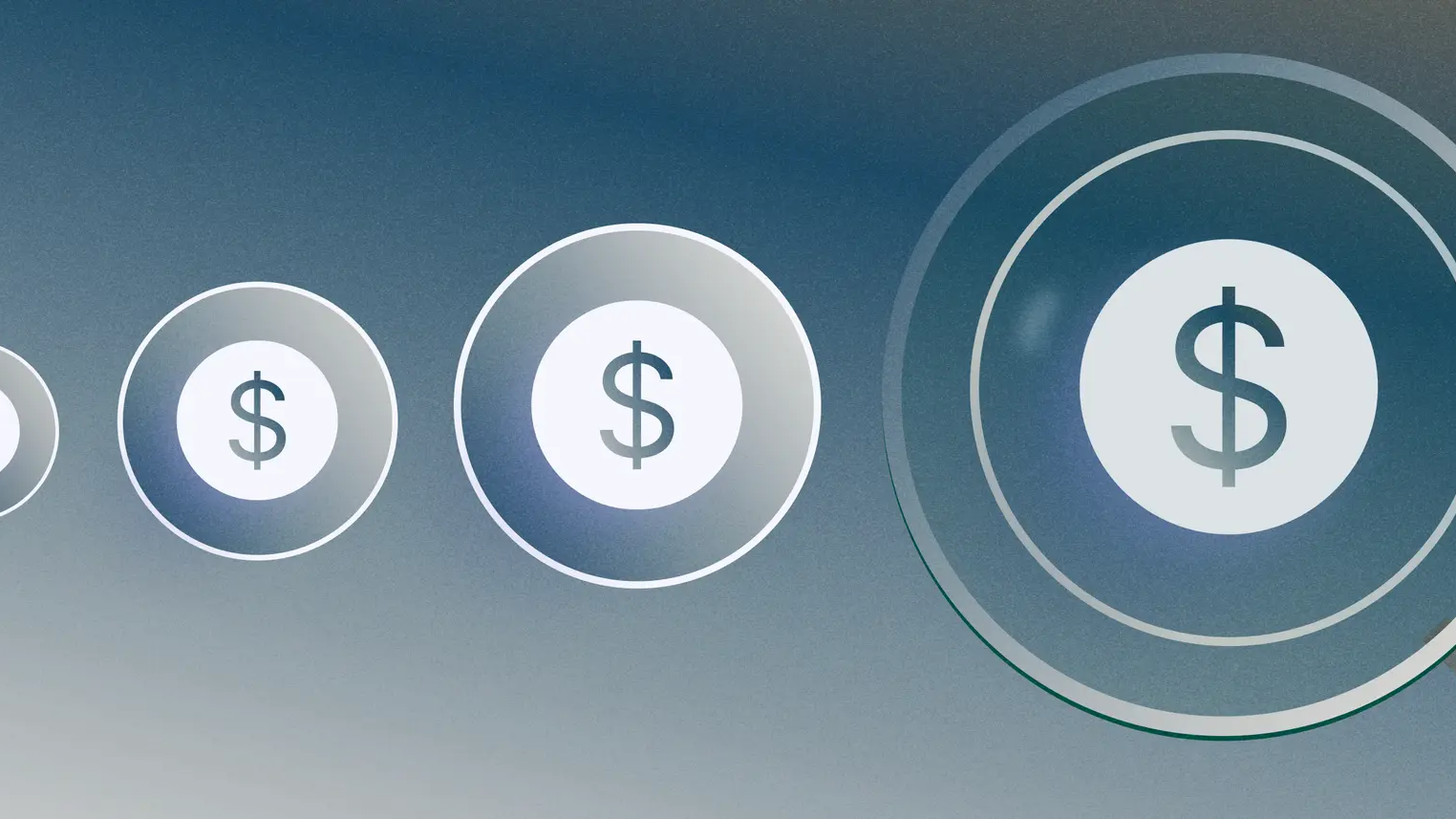Designing a scalable revenue management process

Head of Product at Sequence
Having a reliable revenue system matters. Most companies run a manual, error-prone process using spreadsheets and homegrown tools. Contract and pricing data ends up fragmented across different teams, systems and never quite adds up. As a result, CFOs struggle to share accurate revenue numbers, pricing initiatives are blocked, and customers are left wondering about inaccurate bills. This is not just a back-office problem. It's a top business priority that directly contributes to — or can drastically impede — growth.
In working with hundreds of B2B companies to help them build the foundations for scalable revenue collection, there are plenty of tips and best practices we’ve picked up along the way. In this guide, we offer revenue management insights that can be used across Finance, Sales, and Engineering teams, and implemented across pricing, packaging, infrastructure, and accounting.
The building blocks of effective revenue management
Designing a scalable revenue management process starts with nailing the basics. If you’re running a sales or product-led B2B software business with hybrid pricing models, here are some things to keep in mind.
Products
Defining a well-structured product catalog is one of the highest-leverage activities you can do early on. Your product catalog contains the products or SKUs you’re selling to customers and is the ultimate source of truth for pricing.
For each product in your catalog, define the feature entitlements the product unlocks, its tax category, and revenue code on your general accounting ledger. Define these attributes per product upfront to avoid painful manual calculations and reconciliation later on.
It’s sensible to keep your packaging simple and your number of products manageable. This reduces operational overhead and makes your offering easier for customers to understand.
You should also keep track of product versions to simplify change management, such as when a product’s feature set changes or if you’re repackaging your offering.
Prices
Your go-to-market motion determines how your products will be priced. If your business is sales-led, you will sell contracts with custom terms. Conversely, in a product-led or self-serve business, your customers will be spread across a set of standard pricing plans. For each product, track its prices across your customers. For each price, define explicitly how a customer is charged (pricing model), how often (billing frequency) and when (in advance or in arrears).
Depending on your business model, you will need to account for different pricing models, such as standard subscription pricing, one-time charges, usage-based charges with tiers, seat-based pricing, etc. If your pricing is usage-based, you also need to define a metric to calculate usage. Make use of tiers, volume discounts, and upfront commitments to align incentives with your customers.
It’s helpful to define one or more list prices for each product to create a standard in your business. List prices help simplify the quoting process and allow finance and revenue teams to analyze performance, margins, and growth opportunities. For any product, you may have different list prices based on geography or experimental pricing models.
Your prices should also be versioned to simplify change management, such as price changes. For example, you may choose to roll out a new version of a price from January 1st to implement a price increase.
Billing schedules
Use schedules to automate the billing and invoicing process for your finance team instead of relying on manual calculations in spreadsheets. A schedule ties one or more prices to a customer over a period of time, reflecting their contract or subscription.
If your contracts are multi-year or include ramped pricing, you can model these as phases within a schedule. This avoids the need for multiple schedules per customer, ensuring a contract is captured as a single object in its entirety. Phases can also be used to manage renewals, add-ons, or price changes.
Quotes and contracts
In a sales-led motion, your customers will go through a sales process including discovery, evaluation, proposal, negotiation, and signature.
Quotes are critical customer touchpoints in the sales process. They should be clear, well-designed, and aligned with your company’s brand to leave a positive impression on your customer.
Your customers may sign your quote directly, which in turn becomes the agreed-to contract. Alternatively, your quote may form part of a mutual service agreement with additional terms that may go through multiple revisions with a legal team. Once both parties agree, collect electronic signatures to make the contract legally binding.
It is common for sales reps to quote pricing that is ambiguous for finance teams. This leads to unnecessary back-and-forth between teams, a common source of billing errors. To avoid tension between sales and finance, provide your sales reps with a price book of standard list prices for each product. This avoids duplicate data entry for finance operators and ensures your system can actually handle the pricing and terms your customer is agreeing to. You may also consider introducing guardrails and approval workflows to prevent contracts with unfavorable terms.
If your pricing is usage-based, make it easy for your prospect to forecast usage and estimate their spend. To align incentives, consider offering minimum commitments with additional usage fees above the committed amount (overages).
It’s sensible to store contract metadata in a structured table or database to simplify downstream workflows and analysis.
Usage events and metrics
If your business model is usage-based, usage data is your lifeblood. Invest in infrastructure to track and measure usage events.
One of the first steps is to define a value metric. Coming up with the right metric is hard and has implications for sales, customer success, engineering, product, and finance. In defining a metric, aim for simplicity. A value metric should be easy to understand for customers, reflect your product’s value, and not be gameable. Consider whether you can easily measure usage for your chosen metric. Avoid metrics that make attribution difficult or that misalign customer incentives.
Good examples of value metrics include:
- Per verification (e.g. Stripe Identity)
- Transaction-based fees (e.g. GoCardless)
- Credits (e.g. Snowflake)
- Tasks completed (e.g. Zapier)
- Tokens (e.g. OpenAI)
Unclear value metrics:
- Metrics with arbitrary units (e.g. compute units)
- Complex metrics (e.g. combining multiple variables like API calls, data storage, and bandwidth usage into a single composite score)
- Delayed impact metrics (e.g. a metric based on quarterly usage trends)
- Metrics that don’t map to value (e.g. interaction minutes)
Usage-based pricing also has implications on how you’re tracking revenue and predicting growth. One method is to assume a quarterly rolling average of customer usage in your ARR calculations. In any case, it’s important that your customer-facing teams have visibility over customer usage trends so they can make informed decisions.
Invoices & accounts receivable
Ship modern, professional-looking, and easy-to-understand invoices to your customers. It’s good practice to provide invoices in both digital and PDF formats to augment your customer’s existing payables processes and speed up collections.
An invoice is a standard financial document and must contain certain information, including a clear breakdown of line items. Every invoice must have a unique invoice number for audit reasons. To correct mistakes, edit the invoice, use credit notes or re-issue an invoice with a new invoice number while marking the original invoice as uncollectible.
Depending on your location, you will need to collect sales tax from your customers. It’s best to use a third-party tax engine integrated into your invoicing workflows instead of calculating tax yourself, especially if your business is based in the US.
Overdue invoices (days sales outstanding or DSO) are a common problem for finance teams. Don’t underestimate the impact of a good collections process — and the same goes for your dunning process, which is the standard follow-up process including escalatory measures to ensure timely payment.
Revenue
Earnings, billings, bookings, and revenue are all different indicators of a company’s financial performance.
Understanding and calculating revenue involves more than just adding up contract values or subscription fees. To get a clear picture of your financial health, you need to consider factors like churn, downgrades, expansions, and upgrades. For instance, if you only bill annually and experience no churn, downgrades, or upgrades, and have one client paying $50,000 annually, your annual recurring revenue (ARR) would be $50,000. It's a straightforward calculation, but real-world scenarios often include more variables depending on your pricing model.
If your business is usage-based, your revenue will fluctuate. Consider introducing minimum commitments or credit burn-down models to make revenue more predictable. Treat usage-based revenue as a separate bucket alongside fixed, recurring revenue. Use a monthly or quarterly rolling average to forecast usage-based revenue. Consider how seasonality affects your customer’s usage patterns. If your product requires a multi-month implementation, account for low usage figures in the early periods of a customer’s lifecycle in your revenue model.
Revenue sub-ledger
There are a few ways to approach revenue recognition. Modern accounting standards like ASC 606 and IFRS 15 state that revenue should be recognized at the time you deliver products and services to customers, as opposed to when you invoice them or collect payment. Bespoke contracts with one-off fees, milestones, and upfront commitments can make it hard to accurately recognize monthly revenue.
If your month-end process involves intricate spreadsheets and posting manual journals to your Accounting suite, invest in a billing system that can automatically apply revenue recognition logic over the source data records — billing schedules, usage data and invoices — and track it in a dedicated revenue sub-ledger. Think of this as a subset of your general ledger specialized for revenue accounting.
Keep your revenue sub-ledger in sync with your general ledger by exporting summary journals from the revenue sub-ledger into your ERP at month-end. This gives you accurate financial statements, while leveraging a dedicated tool to express complex revenue recognition rules that would be difficult to implement in the ERP.
System integrations
Revenue management is a business process across finance, engineering and sales. Avoid creating silos and ensure that workflows and data records engage with other team’s existing systems. Finance teams need billing and revenue data to feed into the general ledger in the ERP. Consider what data records need to be pushed into BI and FP&A tools.
Engineering and product teams need to consider what features a customer has access to based on their contracts and subscriptions while making it easy to view and update billing information. If your product has a usage element, engineering and data teams will also own any metering infrastructure and API integrations
Sales teams need to have a 360-degree view of every customer’s contracts, financial obligations, and usage trends within their CRM. This allows teams to make better decisions, identify expansion opportunities, and spot at-risk customers.
Revenue management best practices
Consider the following best practices and reminders to scale your revenue collection process:
Win customers with professional proposals
Running a tight sales process is essential. In many cases, you can win a deal simply by moving faster than a competitor. Send that proposal immediately instead of tomorrow. Respond to the email in minutes instead of later. Invest in a well-designed proposal document that reflects your brand and clearly communicates your pricing. Call out customer testimonials, quotes, and visuals to stand out from the competition. Use variables to avoid mistakes such as forgetting to update a customer’s name in a copied proposal.
Don’t innovate on pricing
Choose a pricing model that is well understood by your customers. Most of the time, it’s a good idea to stick to the standard model in your category. If you’re a collaboration platform, charge per seat. If you’re a general purpose SaaS business, you may charge a platform fee. If you’re an API business, charge based on API usage. Trying to come up with innovative pricing models in your domain creates friction for customers as they compare you to alternatives.
Pricing is never done
As your business grows, your pricing will change. New market segments, product launches, bundling opportunities, and go-to-market changes will result in new pricing and packaging initiatives. Just because you’ve wrapped up a pricing project, doesn’t mean your pricing will not change in the next 6 months. Pricing decisions are complicated because you need to balance technical limitations and customer value with driving revenue.
Invest in third-party tooling with a flexible data model and avoid building a costly in-house engine geared towards your current pricing — it will inevitably change.
Use hybrid pricing models
Today’s successful companies don’t just rely on a single, one-dimensional pricing model. Instead, they align the pricing model of each product or feature with the value delivered to customers (e.g. per user, per event, platform access). Companies like Github, Zapier, and Hubspot use the most appropriate pricing model for each feature in their offering, combining platform fees with seat-based charges, usage credits, and minimum commitments.
As you’re introducing new modules, add-ons, or product lines, consider the most appropriate pricing model, instead of defaulting to your existing one.
Keep packaging simple
Your packaging is your chosen set of plans, bundles, add-ons, and product lines and evolves as your company grows. Packaging fundamentally influences how a buyer perceives your offering and whether it’s a fit for them. Resist the organizational pull towards breaking up your offering in myriad ways. Instead, minimize your number of plans, bundles, and add-ons and optimize for simplicity.
Remember that each additional SKU has upstream implications for sales quoting, commissioning, revenue tracking, and downstream implications on product feature entitlements, billing calculations, revenue recognition, and tax.
Reduce tension between sales and finance
Sales and finance teams have fundamentally different incentives. For CFOs, control, accuracy and margins are top of mind. Contrast this with the sales team’s incentive to meet quarterly revenue targets. With the right standards, processes, and guardrails, speed and flexibility don’t have to be at odds with control and accuracy.
Standardize your offering with list prices and bundles to avoid contracts with esoteric product offerings that your finance teams can’t support. Introduce lightweight approval workflows prior to contract issuing to ensure deals are profitable.
Define a source of truth for products, pricing, and contracts
Invest in a single source of truth for products, pricing, and contract information across your customer base. In most companies, this data is fragmented and inconsistent. It’s spread across different systems and teams, making it difficult to reconcile what’s accurate. This creates manual work for everyone involved and results in a constant back-and-forth causing errors that harm your business.
Whatever you choose as your source of truth, it’s essential this data is distributed into other systems, such as the CRM, your data stack, and your ERP where needed.
Dealing with products, pricing, and contracts is inherently multi-disciplinary, so baking it into any one team’s system will not work for other teams. For example, a CRM is not suited to run Finance workflows like billing. Equally, your ERP is not suited to drive sales workflows like quoting. You must invest in a neutral middle ground as the source of truth.
A reliable and scalable revenue management system is crucial for companies aiming to grow sustainably. Simplifying pricing, keeping a single source of truth for products and contracts, and using a flexible, integrated tech stack helps businesses boost efficiency, minimize errors, and improve both customer satisfaction and financial performance.
About the author
Merlin Kafka is the Head of Product at Sequence, a billing and receivables platform for sales-led B2B teams to turn custom contracts into automated invoicing.
Related reads

How AI is influencing early roles at startups

Should you launch on eBay? A viability checklist by product category

The 8 most common inventory mistakes (and how to fix them)
